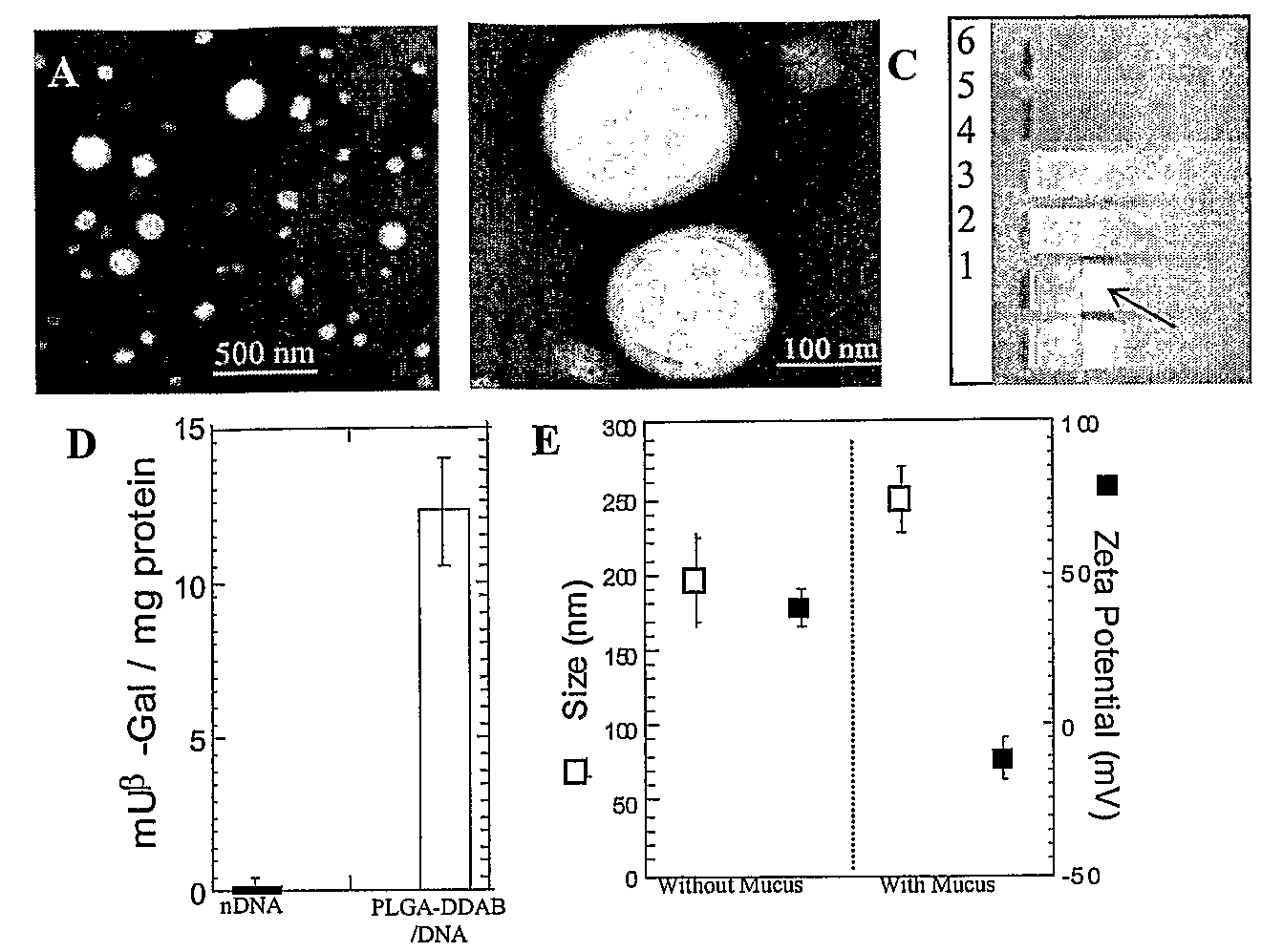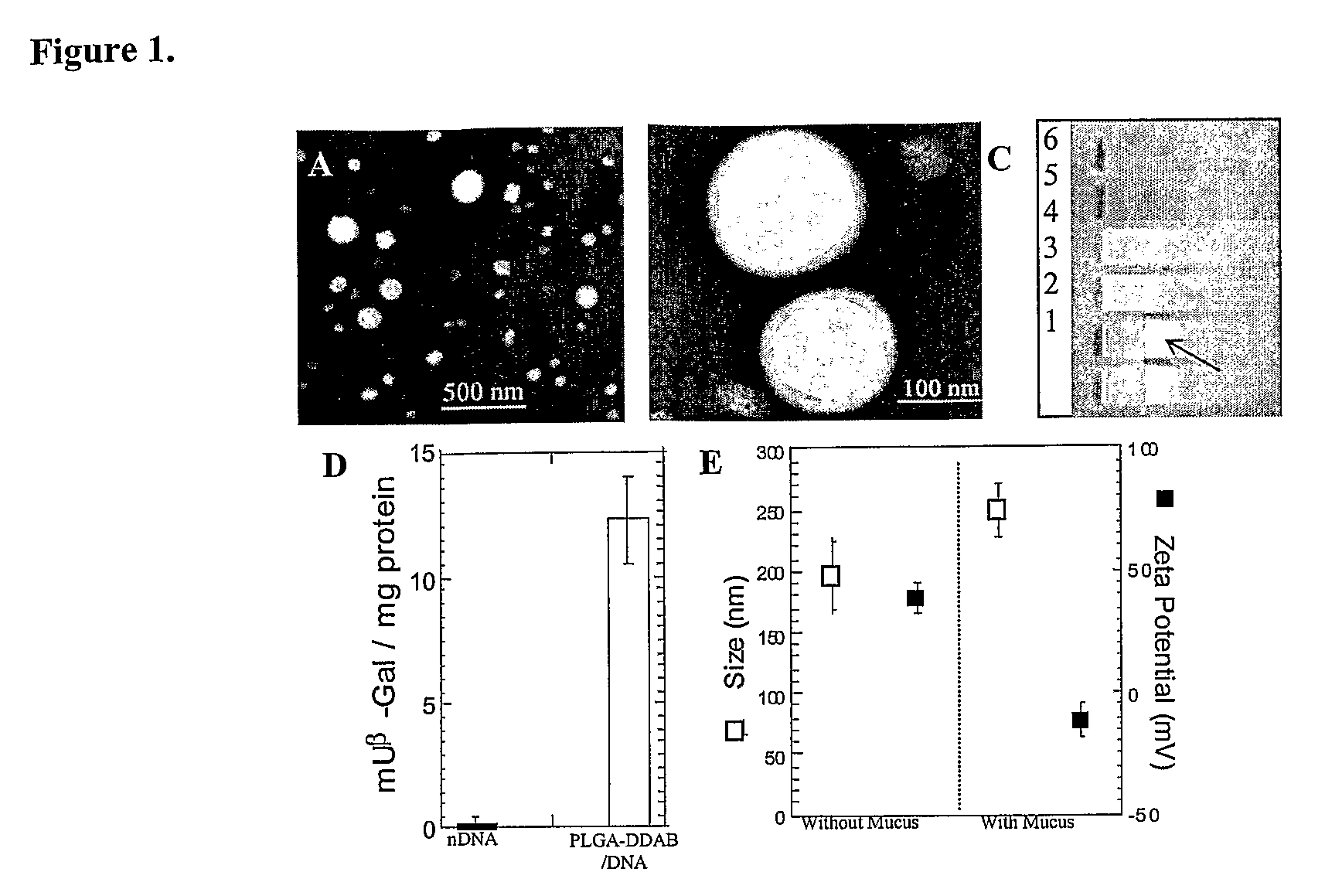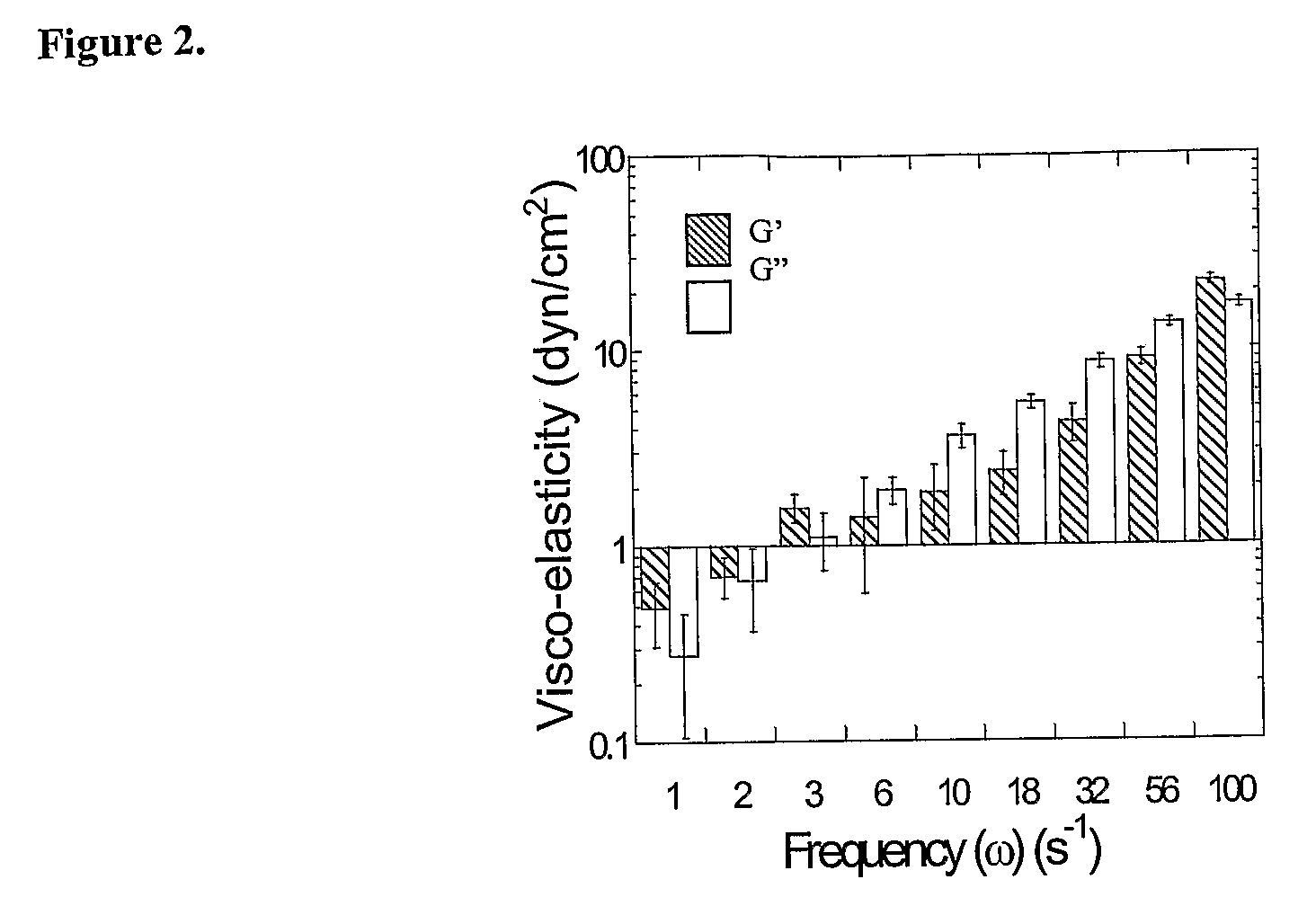Drugs And Gene Carrier Particles That Rapidly Move Through Mucous Barriers
a gene carrier and drug technology, applied in the direction of peptides, drug compositions, aerosol delivery, etc., can solve the problems of impede the transport rate of large macromolecules and nanoparticles, and achieve the effect of promoting adhesion or complexation
- Summary
- Abstract
- Description
- Claims
- Application Information
AI Technical Summary
Benefits of technology
Problems solved by technology
Method used
Image
Examples
Embodiment Construction
1. Overview
[0038]Cationic microparticles with DNA adsorbed to their surfaces have been shown to efficiently transfect cells in vitro. E.g., Singh et al., Proc Natl Acad Sci USA 2000, 97, 811-816; Singh et al., Pharm Res 2001, 18, 1476-1479; Denis-Mize et al., Gene Ther 2000, 7, 2105-2112. However, obtaining high transfection efficiencies in vivo is often limited by particle transport through extracellular barriers, including the mucosal barrier, which has been described as the foremost barrier to transfection in mucus-covered cells. See, e.g., Ferrari et al., Gene Ther 2001, 8, 1380-1386; Yonemitsu et al., Nat Biotechnol 2000, 18, 970-973.
[0039]High MW poly(ethylene glycol) (PEG) has been used as a mucoadhesive added to polymeric systems for its reported ability to interpenetrate into the mucus network (Bures et al., J. Controlled Release, (2001) 72:25-33; Huang et al., J. Controlled Release, (2000) 65:63-71; Peppas et al., J. Controlled Release, (1999) 62:81-87) and hydrogen bond t...
PUM
| Property | Measurement | Unit |
|---|---|---|
| diameter | aaaaa | aaaaa |
| diameter | aaaaa | aaaaa |
| diameter | aaaaa | aaaaa |
Abstract
Description
Claims
Application Information
 Login to View More
Login to View More - R&D
- Intellectual Property
- Life Sciences
- Materials
- Tech Scout
- Unparalleled Data Quality
- Higher Quality Content
- 60% Fewer Hallucinations
Browse by: Latest US Patents, China's latest patents, Technical Efficacy Thesaurus, Application Domain, Technology Topic, Popular Technical Reports.
© 2025 PatSnap. All rights reserved.Legal|Privacy policy|Modern Slavery Act Transparency Statement|Sitemap|About US| Contact US: help@patsnap.com



